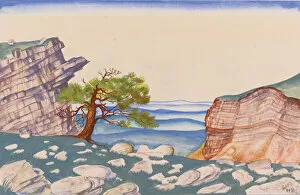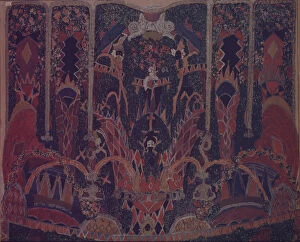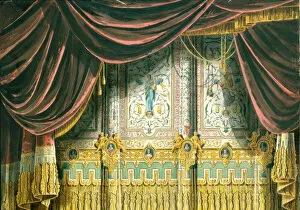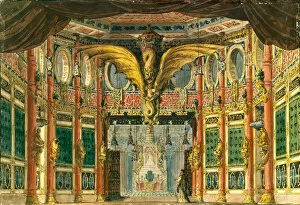Stage Design Collection (#9)
Stage design is an art form that has the power to transport audiences into a world of beauty, fantasy, and emotion
For sale as Licensed Images
Choose your image, Select your licence and Download the media
Stage design is an art form that has the power to transport audiences into a world of beauty, fantasy, and emotion, and is a visual language that enhances the storytelling of ballets and dramas, creating immersive experiences for both performers and spectators. In the early 20th century, stage design underwent a revolution thanks to visionary artists such as Sir John Lavery, Leon Bakst, Nicholas Roerich, and Sergei Yurievich Sudeykin. Their works brought new dimensions to performances by iconic dancers like Anna Pavlova and Vaslav Nijinsky. One notable example is Bakst's stage design for "The Afternoon of a Faun" in 1912. The ethereal backdrop perfectly complemented Debussy's haunting music while showcasing Nijinsky's mesmerizing movements. Similarly, Roerich's costume designs for "The Rite of Spring" captured the primal energy of Stravinsky's composition with their bold colors and intricate patterns. Another masterpiece was Sudeykin's stage design for Tchaikovsky's timeless ballet "The Nutcracker. " His whimsical interpretation transported audiences into Clara's enchanting journey through the Land of Sweets. These artists didn't limit themselves to ballet alone; they also ventured into theater productions like Euripides' "Hippolytus. " Bakst created stunning costumes for Phaedra that embodied her tragic character flawlessly. Beyond individual performances, these artists contributed significantly to theater architecture as well. The curtain design for the Theatre in Krakow showcased intricate details that set the tone even before the performance began. Stage design became an integral part of cultural expression during this era. It blended various art forms seamlessly – music, dance, painting – creating harmonious collaborations between different artistic disciplines. Today we continue to be inspired by these pioneers who pushed boundaries with their innovative designs.







